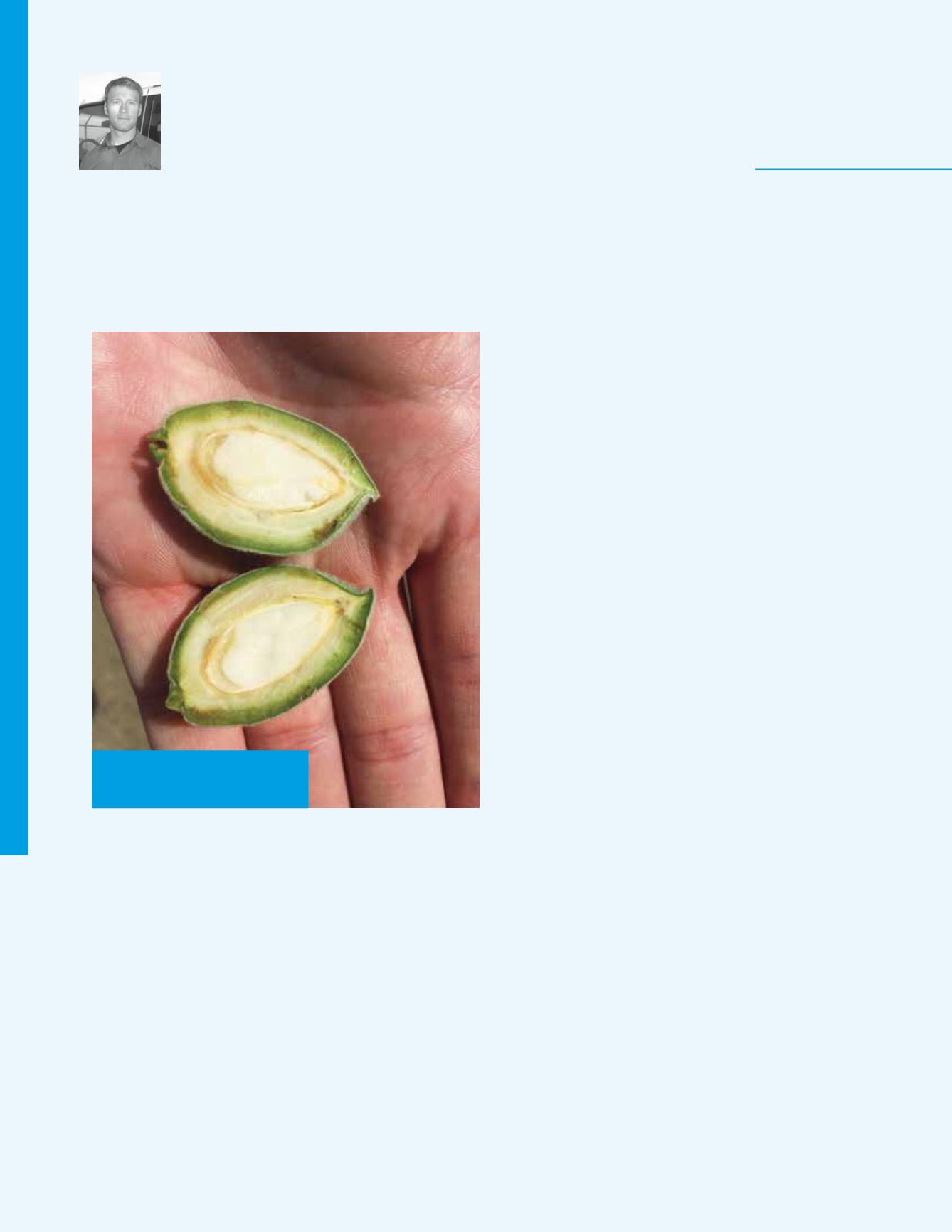
34
Almond Facts
MAY | JUNE 2017
IN YOUR ORCHARD
Kernel fill for Nonpareil will be completed by late May in the northern San Joaquin Valley. This
suggests that hull-split and harvest will occur closer to “normal” earlier than normal, which will be
later than the past three to four years. This will impact nutrient, irrigation, and insecticide timings.
Of course, every orchard will progress differently depending on location and varieties, so it is
important to monitor the progression on an orchard basis.
Irrigation Prior to Hull-Split
Research has shown that a mild to moderate water stress
applied prior to and maintained through the first week
of hull-split may help with harvesting and reduce hull
rot. This practice is known as regulated deficit irrigation
(RDI). Irrigation durations should be reduced and plant
stress should be monitored using the pressure chamber
until a stem water potential of -15 bars is achieved.
Depending on soil and irrigation practices, this may take
a few days to several weeks and may require a 10-50%
reduction in water applied. The moderate stress should
be maintained for two weeks before the onset of hull split.
Once hull-split is progressing, then full irrigation should
resume until the pre-harvest programs begin.
Operations successful with the application of RDI
typically begin to cut water at a small percentage (10-20%)
after the completion of kernel fill and 3-4 weeks prior to
hull-split. As stress and soil moisture levels are monitored,
the water reduction is adjusted. Heavy soils may require
a larger initial reduction and a longer duration of
curtailment. Soils with a lower water holding capacity or
under-irrigated orchards may have a smaller or shorter
period of reduction.
Be careful not to over-stress the trees. Too much stress
during the hull-split period can decrease kernel weights and
cause “textured” kernels. If trees have been deficit irrigated
through the season due to drought conditions, RDI is not
advised. More information can be found in Publication
#8515 “Drought Management for California Almonds”
available for free at
/.
Disease Management
By mid-May, the ability to control most diseases is
not possible. Summer foliar diseases such as rust and
alternaria, however, may require treatment. A spray model
has been developed to assist in managing Alternaria. It
has been shown to be very effective in and makes use of
temperature and periods of leaf wetness. Disease severity
values (DSV) are assigned for specific ranges of average
temperatures during leaf wetness periods during a day.
Fungicides applications occur if the accumulated index
values over a 7–day period reach a value of 10 or higher.
A weather station and a leaf wetness sensor should be
installed to help calculate the DSV. More information can
be found at ucipm.ucdavis.edu.
Rust problems have increased over the past years due
to tighter spacings, later rainfalls, and more frequent
irrigations. Earlier applications of fungicides are the
most effective, but June timed sprays may be needed –
especially if late rains occur. Most fungicides are effective
in controlling rust. Applications should be made before
Almond kernel development nearing
completion within a ‘Nonpareil’ almond.
Photo Credit: David Doll.
DAVID DOLL, UCCE Nut Crop Pomology Farm Advisor, Merced County
Time To Consider


